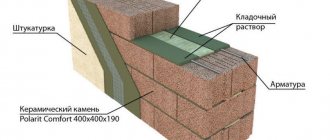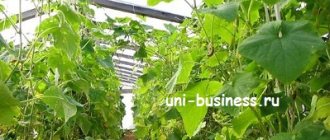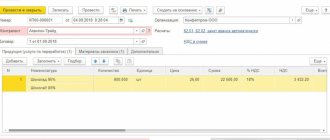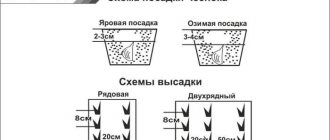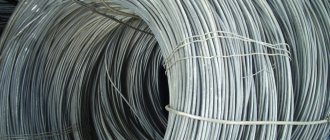Features and benefits of business
The business idea of growing champignons involves a number of features both in the first steps of opening production and in the subsequent procedure for growing mushrooms.
Businessmen evaluate factors such as competition, demand and other market conditions, as well as the possibilities for growing mushrooms, requirements for sites, the growing process, and so on. All this creates a number of advantages of this option of running your own business. The main advantage of the mushroom business is the small area of land for growing champignons. From three square meters an entrepreneur can get up to forty-five kilograms.
The following points are also recognized as the advantages of the chosen direction for growing mushrooms:
- growing champignons does not require labor, simple methods of growing the crop are provided;
- the initial stage of organizing a business does not involve large financial investments;
- practice demonstrates a yield indicator that meets market demand.
In the general understanding, such a business does not imply any shortcomings. Accordingly, the entrepreneur is guaranteed a stable profit and a flow of customers.
At the same time, the entrepreneur is offered two hundred types of champignons suitable for breeding. Only two of them are recognized as harmful crops for people: yellow and variegated mushrooms.
In addition to the advantages associated with the selection and cultivation of individual types of mushrooms, there are a number of advantages when starting a business. Despite the fact that mandatory registration of a business in the form of an LLC or individual entrepreneur will be required, preferential tax regimes are offered for businessmen, which significantly reduces the list of costs.
Special mention should be made about the procedure for registering a case.
Practice has allowed us to create a list of actions to start with:
- Registration of individual entrepreneurs. Having the status of an individual entrepreneur is the preferred option, allowing you to register a business in a short time.
- Choice of taxation system. Such a business allows you to apply for a special regime, namely the Unified Agricultural Tax, which significantly reduces the total cost of paying taxes.
- Getting permission. The sale of mushrooms requires a license, therefore, before submitting an application for registration, you need to take care of a phytosanitary permit, compliance of the conditions with the provisions of GOST and a document confirming the fact of carrying out control measures.
Only after completing the necessary documents can you begin the actual work and implementation of the formed business project.
What mushrooms can you grow?
Before starting a business, you need to decide on the types of mushrooms that you plan to deal with; it would be more correct to concentrate on 2-3 names, since each of these organisms requires its own subtleties of cultivation. Over time, you can gradually expand the range. The most popular options include:
- Porcini mushroom is the most valuable and is used to prepare all kinds of salads, soups and sauces. The demand for this species is quite high, but it is worth noting that the process of growing it is accompanied by some hassle due to the need of the fungus to grow in conditions as close as possible to natural ones.
- Oyster mushrooms are the least demanding species and do not require special care. To plant them you will need a small area, since from 1 sq. m, 13–15 kg is collected, and the first collection can be made after a month. The popularity of oyster mushrooms is due to the large amount of nutrients they contain, various vitamins and amino acids.
- Champignons are among the most expensive mushrooms, since in the process of growing them additional costs are required associated with the purchase of compost made from straw, horse manure or chicken droppings and gypsum.
Description of the sales market
The main factor for the success of champignon production is the quality and freshness of the products.
The main methods of marketing products are:
- Own retail outlet
- Wholesale trade through distributors and in-house
The target audience is city residents. In order to deliver fresh products and sell the entire volume of products, these sales channels are used.
Clients can be large wholesale vegetable warehouses, retail chains, restaurants and other catering establishments.
Interaction with the maximum number of clients will allow you not only to quickly sell all products, but also to scale your business. To retain customers, you can use discounts on products and free shipping.
Estimated financial costs
A business plan for growing champignons is drawn up taking into account the specifics of working in the agricultural sector. In order to create a large mushroom farm, you will need at least three and a half million rubles. Most of this money will be used to purchase real estate that meets the requirements of the entrepreneur. About one million rubles will need to be spent on equipping the premises with all the necessary equipment. The remaining money must be spent on purchasing mycelium, compost and gardening tools. Having your own real estate allows an entrepreneur to save two million rubles.
The average monthly business costs reach seventy thousand rubles. This amount must be sent to:
- Payment for electricity and other utilities.
- Payment of hired personnel.
- Payment of taxes.
- Purchase of raw materials and compensation of transportation costs.
Sales and Marketing
To quickly and efficiently attract customers, you will need good advertising. To develop it, you need to contact a marketer. This will allow you to avoid mistakes when creating advertising, as well as save your advertising budget.
The main advertising channels are:
- Advertising on social networks
- Advertising in the media
- Contextual advertising of products
- Cold calling clients
- Visiting industry exhibitions
The list of channels is not exhaustive, but it will allow you to use your budget correctly. As the advertising campaign progresses, analyze each source, try to understand where the client “came” from.
Production plan
The general process for opening production will be as follows:
- Legal Entity Registration
- Search for production premises
- Repair
- Equipment purchase
- Hiring
- Purchase of pasteurized compost
- Beginning of work
| Stage/duration, weeks | 1 | 2 | 3 | 4 | 5 | 6 | 7 | 8 | 9 | 10 | 11 |
| Legal Entity Registration | |||||||||||
| Rent of production premises | |||||||||||
| Repair | |||||||||||
| Equipment purchase | |||||||||||
| Hiring | |||||||||||
| Buying compost | |||||||||||
| Beginning of work |
The total duration of organizational activities will be approximately 9 weeks. First, the business owner will need to register a legal entity - individual entrepreneur (01.13.6 “Cultivation of mushrooms and truffles”). Tax system - Unified Agricultural Tax. The tax rate is 6% on company profits. Upon receipt of registration documents, open a bank account. Next, start searching for a production facility.
The next step is to begin the repair. Hire a quality repair crew that has experience installing HVAC systems.
As soon as the repairs are ready, you can purchase and install equipment. The next step is hiring staff. Pay special attention to the selection of a technologist. Next, together with the technologist, find a compost supplier.
The final stage will be the start of the advertising campaign and harvesting.
Growing oyster mushrooms
Any mushroom grower will tell you that growing oyster mushrooms is several times easier and cheaper than growing champignons. Oyster mushroom is less demanding than champignon and it does not require any special microclimate.
The main condition is humidity and good ventilation. And, of course, heating, for year-round production. Almost any room is suitable for obtaining mushrooms, including a wooden house, basement, greenhouse, barn or industrial building.
Minimum requirements for equipment allow you to start practically “from scratch”, subject to the availability of premises in the property. Oyster mushrooms are grown in 10-12 kg bags. The bags are stacked in rows on racks. Sawdust and shavings are used as a substrate, which can be obtained free of charge at local sawmills. Costs will only be for delivery.
Also, for additional nutrition, bran is purchased (about 10% of the sawdust volume is needed). Oyster mushroom mycelium costs about 100 rubles. / kg and is purchased online or from large mushroom farms. For 1 sq. meter requires approximately 6 kg. Other expenses: plastic film, twine for blocks, backing.
The cost also includes the cost of electricity, delivery of raw materials and unforeseen expenses. In total, according to some calculations, about 700 rubles are required per square meter. investments. In a year, if the technology is followed, up to 50 kg of oyster mushrooms can be removed from one square meter. From 100 sq. m. can produce 5 tons, respectively. The mushroom is sold at 180 rubles/kg retail or 130 rubles/kg. wholesale.
It may be interesting: How to organize a business growing oyster mushrooms
Growing oyster mushrooms is a waste-free production. The spent mushroom bags are sold to the local population for livestock feed. It is true that oyster mushrooms have a downside - their spores can cause allergies and worsen human health.
At the same time, the disease can overtake not only those who are directly involved in mushroom growing, but also people living nearby. If oyster mushrooms are grown in the basement, then allergies may occur in people living on the second and even third floors. A “businessman” may ignore the issue of filtration and ventilation of the room, because of which his neighbors and relatives will suffer.
Opinions about the dangers of cultivating oyster mushrooms vary greatly. Some say that during the fruiting period of the mushroom (which is about one week a month), oyster mushroom spores can enter the lungs and turn them into a mushroom block. But this, of course, is exaggerated. In fact, oyster mushroom spores cause common allergies, just as the fur of a domestic cat can do.
All the mushroom grower needs to do is use a respirator and place the production away from the living area. One also cannot fail to mention the complexity of the technology. It is only at first glance that it may seem that growing oyster mushrooms is an easy task.
In practice, it takes some people years to perfect the technology for obtaining stable yields. The most common mistakes are associated with the wrong choice of substrate, poor nutrition of the fungus, as well as ignoring the sterilization of the substrate, which causes bacteria and infections in the mushroom block.
Organizational structure
The organizational structure of the enterprise should include the following specialists:
- Directors
- Technologist-agronomist
- Mushroom picker (2 people)
- Handyman
- Seller (2 people)
- Sales Manager
- Driver (2 people)
Thus, the production staff will be 10 people. The director of an enterprise is the owner of the business. His area of responsibility includes working with clients, concluding contracts, and working with accounting. The technologist is responsible for the production process and monitors the condition of the mushrooms and their composition. Mushroom pickers harvest the mushrooms at the end of the production process. The rest of the time they process mushrooms and carry out instructions from the technologist. The handyman is responsible for economic activities: cleaning premises, carrying fertilizers, loading products into the car. Sellers work at the outlet on a shift schedule. Sales managers are responsible for attracting customers. Drivers work in pairs and deliver products to customers.
Payroll fund, rub.
| Fixed expenses | Salary | The number of employees | Sum |
| Director | 35 000 | 1 | 35 000 |
| Technologist-agronomist | 30 000 | 1 | 30 000 |
| Mushroom picker | 15 000 | 2 | 30 000 |
| General workers | 15 000 | 1 | 15 000 |
| Salesman | 20 000 | 2 | 40 000 |
| Sales Manager | 15 000 | 1 | 15 000 |
| Driver | 15 000 | 2 | 30 000 |
| Insurance premiums | 58 500 | ||
| Total payroll | 253 500 |
A complete calculation of PHOTO for 24 months, taking into account the premium part and insurance contributions, is presented in the financial model.
Mushroom processing
In order to make good money from mushrooms, it is not at all necessary to grow them. On supermarket shelves you can see a large assortment of pickled and frozen mushrooms. It is no secret that the lion's share of their producers do not grow the mushroom themselves, but only purchase it externally.
It's easier for everyone to pack and freeze mushrooms. Champignons are especially suitable for these purposes. A trademark is registered, a small workshop of 50–70 square meters is opened. m., packaging equipment is purchased (double-stage weighing dispensers), several workers are hired - the business is ready.
A more complex method is the production of pickled mushrooms. In this case, it is imperative to include a competent technologist in the staff. Because 90% of success will depend on the marinade recipe. High profitability, according to experienced players, can be obtained by starting the production of hodgepodge from mushrooms. For example, mix mushrooms with cabbage. For a jar of 500 gr. cabbage requires only 1-2 mushrooms.
The main difficulty here is to find distribution channels for products, that is, to gain access to the shelf space of supermarkets or small intracity grocery chains. It is for this reason that not all mushroom farmers engage in processing - it is easier for them to sell mushrooms to a wholesale reseller for pennies.
Purchasing mushrooms can be done in two ways. The most basic one is to purchase goods in bulk from farmers. Oyster mushrooms and champignons are grown in almost every region. In some regions of the central zone, mushrooms can be purchased from the local population during the natural harvest season (August - September).
To do this, it is necessary to establish collection points in villages and villages whose places are famous for their abundance of mushrooms.
Financial plan
Capital costs for opening a champignon production facility, rub.
| Name | Quantity | Price for 1 piece. | Total amount |
| Ventilation and air conditioning system | 1 | 800 000 | 800 000 |
| Refrigeration chambers | 1 | 300 000 | 300 000 |
| Shelving | 5 | 70 000 | 350 000 |
| Office equipment (incl. laboratory) | 1 | 500 000 | 500 000 |
| Computer | 1 | 300 000 | 300 000 |
| Printer | 2 | 30 000 | 60 000 |
| Other (household equipment) | 1 | 8 000 | 8 000 |
| Refrigerated vehicle | 2 | 10 000 | 20 000 |
| Total: | 2 338 000 |
The cost of purchasing equipment is 2,338,000 rubles. The most expensive is the air conditioning and ventilation system. The organization also needs to purchase office equipment, including a small laboratory for testing. The total cost is 500,000 rubles.
| Investments for opening | |
| Registration, including obtaining all permits | 10 000 |
| Repair | 570 000 |
| Promotional materials | 30 000 |
| Cost of purchasing pasteurized compost | 408 000 |
| Cost of purchasing fertilizers and tillage | 200 000 |
| Rent of production premises | 399 000 |
| Renting a retail outlet | 24 000 |
| Equipment purchase | 2 338 000 |
| Other | 20 000 |
| Total | 3 999 000 |
Opening costs are 3,999,000 rubles. The largest expense item is the purchase of equipment. Also, 570,000 rubles must be spent on renovation of the premises. Another 408,000 rubles will be spent on purchasing compost.
| Monthly costs | |
| Payroll (including deductions) | 264 654 |
| Rent of production premises | 399 000 |
| Renting a retail outlet | 24 000 |
| Depreciation | 62 500 |
| Public utilities | 15 000 |
| 30 000 | |
| Accounting (remote) | 10 000 |
| Monthly purchase of fuels and lubricants | 30 000 |
| Unexpected expenses | 20 000 |
| Total | 855 154 |
The amount of monthly expenses is 855,154 rubles. The largest expense items are wages and rent of production premises. The total costs are 663,654 rubles. On average, monthly revenue is 1,115,400 rubles.
Business costs, approximate calculations
A business plan for growing champignons should include a step-by-step action plan at each stage of growing such a crop, and also reflect possible costs, desired profits, profitability indicators and estimated risks.
The average initial cost for developing and organizing a mushroom business is three and a half million rubles.
When assessing the indicated amount of estimated costs, you should consider in detail which cost items are reflected in the business plan:
- Registering a business will require fifteen thousand rubles.
- Purchase of premises – up to two million rubles. It is also possible to rent the territory, but this will not help save costs.
- Improvement of the premises - two hundred thousand rubles.
- The purchase and installation of equipment for growing champignons will require up to one million rubles.
- Purchasing or preparing the substrate yourself – twenty-five thousand rubles.
- Purchase of mycelium – ten thousand rubles.
- Forming and conducting advertising campaigns to find buyers will require up to twenty-five thousand rubles.
If you still decide to rent the premises, then the cost will be up to seventy thousand rubles, which will require you to pay eight hundred and forty thousand rubles per year.
An entrepreneur must be prepared for the fact that the business will operate at a loss for the first months, since the average cost of a kilogram of mushrooms is two hundred rubles. However, profitability with an assessment of work for the year shows an indicator in the range of 25-40%. As the harvest increases, the volume of production will increase to two tons per month, which implies a profit of up to ninety thousand rubles. If we take into account the costs of maintaining the farm and paying staff, the net profit for the entrepreneur will reach forty thousand rubles.
Thus, the mushroom business is a productive option for running your own business.
The greater the volume of champignon cultivation, the higher the profit rate. However, at the initial stage, a detailed assessment of planned expenses and taking into account expected risks is required so that the business does not subsequently cause losses.
How much money do you need to start and how much can you earn from growing champignons?
Let's briefly calculate the main income and expenses for growing our mushrooms. I think this is the most interesting point for beginning businessmen. We warn you in advance that the calculations are approximate and may not accurately reflect the real picture of things. Because too many factors can influence the final profitability indicators (cost of raw materials, heating, selling price, force majeure, etc.). Input data:
- Sowing area – 1 chamber per 200 m2
- Type of property – own heated premises
- Number of permanent employees – 4 people.
Estimated initial investment:
- Equipment for growing (racks, boxes, watering) – RUB 200,000.
- Installation of air conditioning and ventilation systems – 250,000 rubles.
- Lighting – 30,000 rub.
- Refrigeration chambers – 100,000 rub.
- Purchase of mycelium and compost (for a year) – 200,000 rubles.
- Other expenses - 50,000 rubles.
Total – 830,000 rub. Fixed monthly expenses:
- Utility bills – 12,000 rub.
- Salary and insurance contributions – 100,000 rubles.
- Pesticides, film, paper – 15,000 rub.
- Other expenses - 10,000 rubles.
Total for 12 months – 1,644,000 rubles. Income:
- With an output of 15 kg/m2 from 200 squares, we collect 36,000 kg of mushrooms per year.
- Wholesale selling price – 150 rubles/kg.
- Annual revenue – 5,400,000 rubles.
- Net profit for the year – 3,756,000 rubles. (excluding taxes)
As can be seen from the calculations, the investment actually pays off from the first harvest. However, this is a very optimistic forecast, which does not take into account possible crop losses (for example, due to errors in growing technology). Experienced farmers can get a high yield, but beginners can’t. Another reason for financial losses may be the banal lack of sales channels for products. This happens when the target is aimed at several large buyers, and they, as a result, refuse to take the product. In addition, we did not include the costs of furnishing the premises and its repairs in the initial investment. That is, we received the sown areas ready-made. In practice this happens extremely rarely. A beginning farmer will most likely have to locate production either in a rented premises or build his own building, which will significantly increase the initial investment (up to 5-6 million rubles). In this case, the optimal payback can be considered 1.5 - 2 years with strict adherence to the technology of growing the mushroom.
Risks and guarantees of a mushroom farm
The project to open a mushroom farm for growing champignons is a well-developed type of business, and therefore the risks of implementing the business idea are minimal. Their reduction is also influenced by the presence of premises in the property, positioning of products in the middle price segment (160 rubles per kg of fresh champignons), and favorable market conditions. However, in the course of its activities, an enterprise may encounter some predictable and unpredictable circumstances, the assessment of which is presented in Table. 5.
Table 5. Assessment of project risks and measures to prevent their occurrence or their consequences
Marketing and sales of raw champignons
Raw champignons are in demand among a large category of the population who prepare their own food. Housewives choose them purposefully for preparing first or second courses, quite often choosing mushrooms by size. The key requirements for these mushrooms are simple, but extremely comprehensive - freshness and quality. However, such products cannot always be found in stores or markets. According to a survey conducted by the School of Mushroom Growing magazine in collaboration with the Department of Mycology and Algology of Moscow State University, 17% of respondents do not buy mushrooms because they are not satisfied with the quality, and also because they are simply not on the shelves at the time of visiting the store.
Poor-quality stale champignons may have a grayish color, dark spots on the caps, and damaged film. An indicator of a low-quality mushroom can also be its consistency, which can resemble a sponge and weak elasticity. In addition, the spoiled product has a weak or unpleasant odor.
A high-quality champignon is distinguished by a white, slightly pinkish or soft beige color, a matte cap without spots. The mushroom film is either whole (in small champignons) or with tears (in large and medium ones). The smell of this mushroom is pleasant, and the mushroom feels elastic and dense to the touch. The production process will be aimed specifically at creating high-quality champignons.
Both small family farms and large enterprises sell champignons in Krasnodar. The price of raw products in the city varies from 80 rubles. (wholesale) up to 255 rub. per kilogram and averages 170 rubles. per kilogram. As a competitive advantage, at the initial stage it is planned to sell mushrooms at a price of 160 rubles. per kilogram.
If we characterize the situation on the Russian mushroom market as a whole, we can note trends that contribute to starting your own business. According to the magazine “School of Mushroom Growing”, in the first half of 2020, the volume of production of cultivated mushrooms in Russia increased by 15% compared to the same period in 2014. The production volume of champignons reached 4,720 tons, an increase of 606 tons.
The growth of the market was facilitated by factors such as the fact that products were subject to an embargo (the import of fresh mushrooms from EU countries was prohibited), and as a result, a reduction in imports, as well as the devaluation of the ruble. Thanks to the current situation, manufacturers were able to increase production capacity and also raise selling prices. In particular, prices for champignons increased by an average of 35% compared to the first half of 2014.
At the initial stage, it is planned to sell the manufactured goods at our own retail outlet on the Krasnodar market, as well as in small wholesale. Refrigeration equipment is used to maintain freshness. The product does not need any large-scale advertising campaigns. It is planned to attract wholesale buyers using free advertisements on the Internet, as well as through our own connections. Delivery of products to the place of sale is organized using our own transport (cargo van).
Preparing the substrate
A business plan for growing champignons involves the inclusion of several cost items that determine the further concept of development and ensuring the recoupment of the chosen direction of the entrepreneur’s employment. One of these aspects is preparation, and therefore the purchase of the substrate necessary for the growth and development of the crop in question.
It is important to pay attention to the room in which mushrooms are grown. The plan for the production of champignons assumes that in the absence of greenhouses, additional substances will be required that would promote the growth of the crop in question.
The key point in the technology of growing mushrooms for sale and personal consumption is the substrate, which will contribute to the development of champignons, from the moment of sowing to harvesting and sale of products.
The substrate represents the final conditions for the development of plants and microorganisms. Due to the use of special substances, an initial product is formed, which makes it possible to further grow something new, in this case a whole variety of mushrooms. For champignons, a separate list of substances is provided that must be included in such a substrate.
The substrate should be produced in large volumes, since it serves as the basis for the development of culture.
It includes the following elements:
- straw;
- sunflower husks;
- sawdust, but always from non-coniferous trees.
That is, this type of substrate is considered as a fertilizer and feed for mushrooms that need to be grown independently.
Speaking of additional substances required in the absence of specially equipped greenhouses, for the crop in question it is enough to add a solution of bleach to the substrate. Other additives should not be used, since they may adversely affect the development of a specific type of crop, namely champignons.
You can obtain the substrate yourself. To do this, you will need to grind sawdust, straw and husks, then pour boiling water over it and cool. Only after these steps will the substrate be suitable for growing mushrooms. You can also buy the consistency in stores, after which no additional manipulations will be required, and the substrate can be immediately used for its intended purpose.
The correct substrate alone is not enough for mushrooms to take root and grow to the required quantity. You should also think about the terms and conditions.
The substrate should be placed only in large boxes or trays; you cannot sow mushrooms directly into the soil, as is done with most farm products. In this case, there will be no harvest, and investments will lead to losses.
How to find a market for selling champignons
The company's produced and sold product is the champignon mushroom, which is considered one of the most cultivated mushrooms in the world. Champignon has a wonderful taste, is used in many dishes and has a number of beneficial properties. Champignons are stewed, fried, boiled, pickled, added to first and second courses and salads.
80% of the mushroom consists of water. Another 20% are vitamins, minerals and organic acids. Champignons are rich in phosphorus, the content of which is close to that of fish. Due to their low calorie content, champignons are considered a dietary product, and due to the absence of sugar, they can be consumed by people with diabetes. Substances contained in champignons reduce cholesterol levels and prevent the development of tumors. Also, consuming these mushrooms reduces the likelihood of a heart attack and prevents the development of atherosclerosis. Due to their well-known nature and taste properties, the demand for champignons in Russia is constant. Mushrooms are sold both fresh, dried and canned. This project proposes the sale of exclusively fresh products (morning collection, cooling).
The products do not require any special pre-sale preparation, including only standard procedures (washing). Transportation is carried out in ordinary boxes with a capacity of 3-5 kg.
Champignons are an environmentally friendly product, for the production of which no chemicals are used. Since growing champignons requires compost, the issue of disposal of production waste is the removal of used compost. For every ton of phase 2 compost loaded into the growing chamber, about 600-650 waste compost remains at the end of the period. However, spent champignon compost can serve as a good fertilizer for gardeners and gardeners and serve as an additional source of income.
We purchase and plant mycelium
Mycelium or mycelium, as farmers call it, is the initial form of the fungus.
In other cultures, seeds or shoots can act as mycelium. For champignons, separately established types of mycelium are also provided, which can either be purchased ready-made or grown independently. The mycelium is always the vegetative body of the fungus. This can only be used for further crop cultivation. The mycelium is not suitable for consumption.
For mushrooms, there are several options for such vegetative bodies, which are determined according to the variety and type of mushroom harvest:
- Film. The main function of this option is close interaction with the substrate to obtain nutrients.
- Corded. They form a culture due to branching when interacting with the substrate. That is, the mushroom is maximally fueled by such substances.
- Sclerotia. Such mycelia intertwine with each other and help the fungi survive aggressive environmental conditions.
- Rhizomorphs. They also protect mushrooms when exposed to environmental conditions due to the interweaving of multi-colored threads.
- Stroma. They help preserve fungal spores by being in close contact with the host plant.
- Fruiting bodies. They are considered the place of direct formation and fusion of the fungal body.
That is, when growing mushrooms, there is not just one type of mycelium, but several at once. Specific options for this are determined when choosing a suitable variety of mushrooms.
If the mycelium and substrate are combined incorrectly, there is a risk of damage to the fungal body. Hence the need to study the varieties available for such growing options.
These include the following options:
- Silvan 130 is a selective mushroom species characterized by rapid growth and unpretentiousness to environmental conditions;
- Somicel 512 or 608 is a species that requires comfortable conditions for maintenance, but guarantees a high rate of regular harvest;
- Heizer A15 is a variety that provides reduced whimsicality to housing conditions, positive growth rates and a distinctive feature in the form of wide mushroom caps.
These options are rarely used for cultivation throughout the year.
If an entrepreneur wants to receive a harvest for four seasons, then he should choose an imported variety of champignons - Horst V1 and V3.
Growing champignons as a business
It is difficult to say whether it is profitable or not to organize mushroom production. This is not an easy task. Champignons are demanding in terms of keeping conditions: temperature, humidity, soil composition. The slightest failure to comply with the technology leads to crop loss.
Advice! It is better for a beginner to start with small volumes so as not to suffer serious losses in case of failure.
However, business has advantages:
- it is year-round (if you grow mushrooms at home);
- champignons grow quickly, which allows you to get up to 5 harvests per year;
- you can start with a minimum investment;
- high demand;
- little competition;
- waste-free.
Under favorable circumstances, the profitability of the champignon business is high - about 50%.
What investments are needed:
- Mandatory minimum: purchase of mycelium and growing substrate. Can be purchased in a ready-made block.
- Rent a room or area if you don’t have your own.
- Purchase of equipment to maintain an optimal microclimate.
- When expanding a business: paperwork and hiring workers.
Feedback from entrepreneurs suggests that, despite the risks, mushroom growing has prospects. Fresh mushrooms, especially in winter, will find a buyer.
Businessvsele.ru recommends several more interesting directions:
- Business plan for growing potatoes;
- We grow greens for sale;
- How to start a greenhouse business from scratch.
Inoculation and mycelial growth
The premises in which champignons will be grown must be carefully prepared. Ideally, they should have a concrete floor, well-whitewashed walls and any other surfaces. This must be done in order to avoid infection of the mycelium with harmful fungi and microorganisms, which can significantly reduce the yield. It is necessary to prepare premises for the cultivation of champignons in the same way as for growing oyster mushrooms, as we already discussed in the previous article.
You can start sowing the mycelium when the temperature of the compost after pasteurization drops to 24–25 degrees. Temperatures of 30 degrees and above are dangerous for champignons; fungal spores may simply die.
You can fill wooden boxes and shelves with compost; some people use long plastic bags cut lengthwise. With a bed height of 20–25 cm, one ton of compost is enough to fill 10 square meters. m of shelving area. The application rate of champignon mycelium is 7–8 kg per ton of compost. Thus, for 1 sq. m area, 700–800 grams of mycelium are consumed.
Champignon mycelium can be purchased at any specialized store that sells gardening products and stored in the refrigerator until planting. One day before inoculation, the mycelium is warmed up at room temperature, then crushed in a clean container and added to the compost. To do this, in the compost already laid out in boxes in a checkerboard pattern, at a distance of 20 cm from each other, holes 5–8 cm deep are made and pieces of mycelium the size of a walnut are placed in them. After this, the holes are filled.
To avoid drying out, the seeded mycelium is covered with a layer of newspapers, which are periodically moistened. In this case, it is necessary to carefully ensure that water does not fall directly on the compost. For the same purposes, you can use plastic film.
During the growth of mycelium in the room, it is necessary to maintain the temperature at 24 degrees. Ventilation is carried out only if necessary, since excess carbon dioxide has a beneficial effect on the process of mycelium growth. The optimal air humidity at this stage is 90–95%. To do this, place containers of water in the room, or simply water the floors.
After a week, the survival rate of the mycelium is checked. Raise the top layer of compost in several places; if the mycelium has grown 1–2 cm from the place where the seed was added, then everything is in order. It will take two to three weeks for the mycelium to fully grow. After the mycelium has covered the entire thickness and width of the compost, remove the film and paper and begin applying the pre-prepared coating mixture. Experts call this process gobting.
How to grow champignons in the garage
The video shows detailed cultivation of champignons in the garage.
A brief instruction of the process looks like this:
- The substrate in which the mushrooms will grow is prepared. For this:
- 30 kilograms of straw are taken per square meter, which is moistened with water from a hose for four days;
- straw and manure are laid alternately to form approximately 4 layers of each component;
- after 7 days, 7 kilograms of gypsum are added, everything is mixed with a pitchfork;
- after 4 days, everything is mixed well again, watered well and 5 kilograms of fine chalk and 2 kilograms of superphosphate are added;
- after 4 days the components are mixed again
It will take up to three weeks to prepare a high-quality substrate.
- Compost is spread on racks or in boxes - 100 kilograms per square meter of area.
- Mycelium or mycelium is planted.
Tip: When sowing mycelium, you should monitor the room temperature. It should not be higher than 25°C, and the humidity should be approximately 70%.
- The mycelium is buried 7 centimeters into the substrate.
- Covered with a layer of substrate up to 10 centimeters thick.
- The fungal spores are placed in a checkerboard pattern with a distance of 20 centimeters between them.
- Three weeks after planting, mycelium appears.
Appearance of mycelium
- A cover soil mixture is prepared from one part chalk and 9 parts peat.
- The mixture is added over the layer of substrate on which the mycelium has sprouted. Layer thickness up to 5 centimeters.
- In order to obtain high quality champignons, growing them in a garage should be carried out at a temperature within 14 - 17 ° C.
Growing champignons
How to care for champignons
Proper care of champignons requires:
- Regular watering of the substrate.
- Maintaining optimal humidity and temperature in the room.
- The first watering of the substrate should be done 10 days after placing the cover layer, from a small watering can with small droplets. In this case, water should only be on the top layer of the substrate and not penetrate into the compost. Otherwise, the mycelium will begin to rot and disappear.
- The humidity in the room for mushroom growth should be 75 - 80%, for which racks are installed and basins with water are placed on them.
- The room should be ventilated at least once a day.
If all the subtleties of growing mushrooms are properly followed, you can get a high-quality harvest in large quantities.
Also on our resource you can learn in detail about growing onions for feathers in the garage.
Controlling the temperature and caring for mushrooms
Preparation and selection of varieties, purchase or independent formation of mycelium - all this is only the initial stage in the development of a mushroom growing business. Even the most unpretentious types of the crop in question will not yield a harvest if appropriate conditions for their growth are not provided. Accordingly, you should pay attention to the methods and stages of growing mushrooms, as well as climatic conditions.
According to general rules, temperature indicators for the products in question should be no lower than twenty-five degrees above zero, and the humidity level should not be higher than 85%.
To provide the necessary conditions, a heating and ventilation system will be required. Such means are required because during the growing process, namely after covering the mycelium with soil for mushroom germination, it will be necessary to gradually lower the air temperature down to fifteen degrees, and without the appropriate technical equipment such an effect will be difficult to achieve. Separate mention should be made of the stages involved in the process of growing the type of crop in question.
This includes the following steps:
- Purchase of substrate, mycelium and other necessary substances. Before deciding on the varieties of mushrooms, you need to evaluate the conditions that will be provided for their development.
- Placement of substrate and mycelium. This happens through the use of plastic bags into which the specified substances are immersed. Be sure to make holes in the bags in which the mushrooms will germinate. If boxes are used for growing crops, then you additionally need to purchase grain powder and cover soil with which the substrate is covered.
- Watering. Mushrooms do not require a constant supply of moisture, but periodically (taking into account the selected variety) you need to water them using a watering can, then a rain effect will be created. You cannot water the crop daily from a watering can, otherwise the mushrooms will not grow due to excess water.
The entrepreneur must also ensure that the crop is not exposed to direct sunlight, which can harm the mushrooms.
What do you need to open a champignon farm?
When starting your business from scratch, proceed according to this scheme:
- Analyze the local market, identify the relationship between supply and demand.
- Study competitors and business risks.
- Find out the growing technology.
- Prepare a business plan for growing champignons.
- Find a room and materials.
- Register your business, find staff.
- Find product buyers.
Permission
First of all, you need to register an individual entrepreneur. Submit an application to open production, prepare a document confirming payment of the state duty.
Enter 0 1.13.6 “Cultivation of truffles and mushrooms” as the OKVED code. You will receive permission to open a business for growing and selling mushrooms if you have:
- documents on the implementation of radiological control;
- phytosanitary certificate;
- certificates of compliance with GOST;
- instructions for placement and transportation of mushroom products.
Select Unified Agricultural Tax as the taxation system.
Room
A harvest weighing 2 - 4 tons is collected from a plot of 100 square meters. m. You can run a business on a personal plot if you have suitable premises, but you won’t be able to create a large farm at home, since large areas are required. If the business takes off, the farm needs to be expanded from 100 to 300 square meters. m, so find a separate room.
At the start, it is better to rent a room, since purchasing may not be practical. Divide the room into 4 zones and use it for:
- making mass for growing;
- pasteurization of compost;
- sowing mycelium;
- growing mushrooms.
Pay attention to ventilation and air humidification - install a climate control system. A suitable room for the first stage is a greenhouse. Use it from September to February. Demand for mushrooms increases in winter - increase production during this period.
Use film and glass greenhouses - they provide the necessary temperature and humidity. You can use polycarbonate. Organize also systems:
- heating;
- ventilation;
- glaze.
Watering can be done manually. It is allowed to grow mushrooms in the basement, barn, garage or attic. The floor should be cement to prevent mold.
Equipment
Purchase the following equipment:
- air conditioner and thermometer;
- lighting fixtures and scales;
- steam generator and water heating boiler;
- fridge.
Heaters are used to provide the required temperature. Products are stored in refrigerators. You can grow champignons in boxes, on shelves, in pallets, and bags. Purchase these containers and fill them with the prepared substrate.
The best way to grow champignons is on shelves. Based on the height of the ceiling, the number of tiers is determined. Thanks to the racks, you can increase the usable area to 200 sq. m.
Organize an irrigation system. It can be automatic or manual. Stock up on water storage containers and spray bottles - the latter will provide humidity.
Make sure the room is warm. Pipes must be laid along the walls. To illuminate an area of 100 sq. m will require about 10 lighting fixtures.
Purchase refrigerators sufficient to store all products. The maximum shelf life is 3 days. If packaging is not carried out, a storage room is used. It must have air conditioning installed.
Equipment for washing and processing champignon mushrooms, (full cycle)
Negotiable price Buy
Equipment for growing champignons, Italy
Negotiable price Buy
Automatic climate control for growing oyster mushrooms/champignons, ARK-1
Price 150,000 rubles Buy
If your budget allows, buy a car. Then it will be easier to deliver mushrooms to customers.
Staff
A small champignon business does not require hiring staff. If you plan to grow mushrooms in large quantities, hire 3 - 4 people. The tasks of the employees are:
- planting mushrooms;
- crop care;
- collection of products;
- room treatment;
- maintaining optimal conditions.
Workers look after the mushrooms. When expanding your business, hire a driver who will deliver products to points of sale.
Gobtirovka
It has long been noted that applying moist soil to champignon beds promotes better fruit formation. This covering layer performs several useful functions:
- retains moisture and protects the compost from drying out;
- stimulates the formation of fruiting bodies;
- regulates the concentration of carbon dioxide and maintains the necessary microclimatic parameters inside the mycelium.
Most often, peat is used as a coating mixture, to which chalk or dolomite chips are added to increase acidity. Peat and chalk are mixed in a 4:1 ratio by weight.
The coating mixture should not contain pathogens of champignon diseases, therefore, before applying it to the mycelium, it is subjected to disinfection. For this, it is best to use water vapor - this is the most reliable and environmentally friendly method. However, in small household plots it is extremely problematic to use this method of disinfection, so they use a formaldehyde solution.
Formalin (40%) is diluted 20 times with water, 12–14 liters of solution is enough to process 1 cubic meter of coating mixture. It is placed on a concrete floor in a layer 20 cm thick and watered with the prepared solution, then covered with polyethylene and left for 2-3 days. At temperatures below 15 degrees, formalin evaporates slowly, which worsens its effects. Therefore, the room temperature should be above this mark.
After 2–3 days, the mixture is shaken and moistened, after which it is applied to the mycelium in an even layer of 3–4 cm. Then, as necessary, the mycelium is watered and loosened. For loosening, you need to use a special device that resembles a wooden construction trowel, in which metal pins are evenly fixed over the entire area (the design is similar to a brush).
Loosening and watering help improve the structure of the covering layer, create favorable conditions for the development of beneficial microflora, which significantly increases the yield of champignon.
The microclimate in the room during the period of mycelium growth after gobtirovka must be maintained at the same level as before, a slight decrease in temperature to 21–22 degrees is allowed. The mycelium fills the surface layer for 7–10 days, after which the rudiments of fruiting bodies begin to form.
How to grow oyster mushrooms in the garage
Advice: To grow any mushrooms in the garage, you should prepare a special pit, disinfect it with a solution of 4% lime and ventilate it for two days. Divide it into two compartments for germination and mushroom growth.
If you need oyster mushrooms, growing them in the garage begins with preparing the substrate.
It can be:
- Sunflower husk.
- Wood sawdust.
- Corn cobs.
- Grain straw.
Tip: For mushroom production, the best substrate is chopped straw or husks.
The materials are pasteurized and the preparation itself is carried out.
For this:
- The mixture or other material is poured with warm water at a temperature not higher than +25°C for 20 minutes. In this case, the mixture must be stirred.
- Dirty water is drained from the container in which pasteurization was carried out.
- The mixture is squeezed out.
- Fill with hot water, the temperature of which is from +70 to +80°C, and apply pressure on top for about 6 hours.
- The water is drained.
- Straw with husks is wrung out.
- To increase the nutritional value of the substrate, and therefore the fruit formation in it, additional components are added. It can be:
- 0.5% superphosphate;
- 2% gypsum;
- 0.5% urea;
- 2% ground limestone.
- When adding additives, their humidity is approximately 75%, which allows the elements not to be washed out with water. The additives are pasteurized separately and then added to the substrate.
To grow good mushrooms, it is necessary not only to make a high-quality substrate and maintain correct agricultural technology, but also to prepare the correct container for oyster mushrooms, that is, bags.
To do this, you can use ordinary plastic bags measuring 40x60 centimeters or 50x100 centimeters. Holes are made in the containers, through which the mycelium will “feed” the fruits. The pitch of the holes, up to two centimeters in diameter, in the oyster mushroom bags is from 15 to 20 centimeters, in a chaotic manner.
The substrate is poured into the bag:
- A layer of substrate 15 centimeters thick.
- Mycelium layer.
- Substrate layer up to 20 centimeters.
- Mycelium layer.
Thus, the bag is filled to 2/3 of its volume.
Tip: The substrate and mycelium should be laid evenly. The total weight of the bag should contain approximately 5% mycelium.
The filled bags are tied, transferred to the prepared garage and hung, as shown in the photo.
Laying the substrate and mycelium
When growing oyster mushrooms and caring for mushrooms, several conditions must be met:
- The temperature in the room should be strictly from +22 to +24°C, and the temperature of the substrate in the bags should be a maximum of +28°C. Indoor humidity is from 90 to 95%. No lighting is required for germination and “absolute infection” of the substrate with the fungus.
- After the substrate is overgrown with mycelium, the bags are transferred to another growth room, where it will begin to bear fruit.
- The bags are placed one on top of the other over the entire area, but not tightly; a passage should be left between them and good ventilation should be ensured (see Ventilation in the garage: correct selection and installation). The bags can be hung from the ceiling.
Under what conditions does oyster mushroom fruiting occur?
Advice: Fruiting of oyster mushrooms occurs only under strict adherence to agricultural technology conditions.
In this case it is necessary:
- Maintain the temperature within +12 - +18°C, and air humidity from 90 to 95%. Mushroom plugs or oyster mushroom embryos will begin to appear in the openings of the bags, forming mushroom bodies in the future.
- You can maintain the required humidity yourself, using standard sprayers or installing a number of containers filled with water in the room, or using special installations.
- When irrigating indoor air, you should avoid getting liquid on the bags and forming even small puddles on the floor.
- The lighting must work exactly 12 hours. In this case, it is enough to have only 100-180 lux, as in cloudy weather. Standard fluorescent lamps are suitable for this (see Garage lamps).
- We must not forget that oyster mushrooms need to be provided with rooms ventilated with fresh air, which requires high-quality ventilation.
Tip: The carbon dioxide concentration in the garage should not be higher than 1%. In addition, it should be borne in mind that mushroom spores during fruiting can cause coughing and serious allergies. To do this, you need to use a special protective mask or respirator.
Compost
Compost is a nutrient medium for champignons; to organize it, an entrepreneur can do one of the following:
- buy ready-made compost;
- equip your own production.
The composition of the soil for obtaining a high yield of champignons includes:
- horse manure (if you don’t have it, you can replace it with chicken or cow manure);
- straw/hay/leaves;
- urea;
- ammonium sulfate;
- superphosphate;
- gypsum/chalk;
- biodestructor.
Recipe for preparing the substrate (prepared in about 25 days):
- The straw is pre-soaked.
- A layer of straw is placed in the container, which is covered with manure. This procedure is repeated six to eight times. All layers are compacted and watered with warm water.
- After three to four days, the resulting mass is thoroughly mixed. Urea and superphosphate are added to it.
- After three to four days, the remaining ingredients, except gypsum, are added to the compost.
- The resulting mixture requires periodic stirring.
- At the last stage, alabaster or chalk is added to the compost.
- The mixture is thoroughly mixed and poured generously.
- Next, a biodestructor is added, which will speed up the fermentation process. This process also stimulates the maintenance of a given thermal regime.
- Every five to six days the mixture is transferred from one container to another and mixed. This will allow microorganisms to quickly decompose manure and straw.
The moisture content of the finished mixture should be approximately 70 percent.
The video describes the process of preparing compost for growing champignons. Filmed by the channel: “Gatsko Production”.
Shiitake cultivation technology
According to some experts, there are now all the prerequisites for profitable cultivation of shiitake mushrooms.
Shiitake is an edible mushroom, a species of the Lentinula genus of the Negniumaceae family, the consumption and cultivation of which is widespread in Japan and China. This is one of the most delicious and healthy woody varieties of mushrooms.
Its consumption slows down the aging process in the body, has an anti-carcinogenic effect and improves immunity. In our country, the demand for shiitake significantly exceeds the supply.
Many Japanese restaurants in Moscow and St. Petersburg are ready to purchase this mushroom at high prices of 500 - 600 rubles / kg. There is an opinion that growing shiitake is not much more difficult than oyster mushrooms, and the economic benefits can be several times higher.
Yes, the cost of growing shiitake exceeds the cost of oyster mushrooms, but the selling price is also significantly different. Oyster mushroom wholesale costs a maximum of 200 rubles/kg, while shiitake is sold for a minimum of 500 rubles, and in some retail stores you can see a price tag of 1000 rubles. and more. You can figure out the “gain” yourself.
Shiitake is grown on cellulose-containing substrates - deciduous wood, sunflower husks, cereal straw, on the cobs and stalks of corn, and even on paper production waste. The mushroom is shade-loving, so it does not grow in the open sun.
The comfortable temperature for cultivating shiitake is from +11 to +25 degrees. Some summer residents, as a hobby, grow shiitake even on the street, having built a canopy over the mushroom plantation. The same mushroom block can be used in the summer, and sent to a warm room during frosts.
The following video details how to prepare a substrate block for growing shiitake at home:
The incubation period for shiitake is significantly longer than for the same oyster mushroom. The formation of the first primordia of oyster mushrooms takes 14 days, while incubation in shiitake mushrooms lasts from 1 to 3 months. As for the yield, the calculation is approximately as follows.
Provided that the substrate is loaded at 200 kg per 1 square meter, you can get up to 40 kg per 1 square meter. m. every 45 days. That is, the approximate yield per year is 300 kg per 1 sq. m. To ensure such efficient use of space, it is necessary to purchase special metal shelving and organize a microclimate system.
Not all mushroom growers succeed in this. The main problem for a beginning farmer who decides to grow shiitake is that it is difficult to find a working technology for producing the mushroom. There are practically no reputable farms engaged in the production of shiitake in our country. Therefore, to gain experience in this matter, you may have to visit foreign countries.
It will be especially difficult to acquire mushroom mycelium. In our country, in 99% of cases, shiitake mycelium is sold by resellers, which makes the price for it obscenely high.
Growing methods
The following methods for growing mushrooms are used:
- Beds in vegetable stores, in mines.
- Dutch system with shelves.
- Bag technique for growing champignons.
- Container method.
- Briquette growing.
If you choose beds in vegetable stores or mines, with this method you will not spend money on additional equipment in the form of racks and containers for compost. But you will have to use mostly manual work. In vegetable stores on damp soil, it is difficult to maintain the recommended level of cleanliness; the soil may be contaminated from the beginning, and it is easy to transfer bacteria to shoes. Mushrooms require sterility and certain conditions. For systematic cultivation of champignons, such conditions may not be suitable, since after the next planting, compost discharge may remain in the soil, which will infect the new mycelium.
The Dutch shelf system is an improvement on the method by using a shelf system with beds. The premises are used more rationally, the production process can be mechanized. The use of the Dutch system requires a large investment, since the system is patented and to obtain a good harvest you will need to purchase the entire production kit.
Such an investment can pay off only if a large yield per 1 square meter is obtained. m. If you are planning mass cultivation for shops and retail outlets, then it makes sense to consider purchasing a Dutch system. Its disadvantage is its lack of sterility. If you do not monitor the spread of microbes, do not maintain cleanliness and do not control the condition of the soil, you can lose your harvest.
The bag technique for growing champignons requires a vegetable storehouse, a mine and other premises of a similar nature. Bag technology is cheap and safe, it is suitable for beginner businessmen and small industries. If the soil in the bag is infected, you can remove it from the common bed and avoid spreading the pests to the rest of the crop. Bags are still the most convenient and cheapest for growing mushrooms.
The room may be small, as the bags can be placed compactly. However, this method also has disadvantages. First of all, manual work is required no less than with other methods. You need to fill the bags with compost, and you will have to tinker with the fertilizer so as not to damage the integrity of the bag.
The container method for growing mushrooms involves the use of containers made of natural materials, which are supplied with special treatment against mold.
You get a mechanically perfect and protected system that allows you to protect the crop from pathogenic bacteria and infections. However, the system is quite expensive, you need to think about the payback from the very beginning.
Briquette growing is the most popular in terms of price and convenience. You purchase briquettes, which are easy to transport, and build the system on a mechanical basis. Consumables are cheap, so if you consider the benefits, then this is the best option for starting a mushroom business. Mushroom farming should be profitable within a season.
Mushrooms in a greenhouse
Features of cultivating champignons in a greenhouse:
- in the cold months (September-May) you can grow mushrooms in the greenhouse, and in the summer months you can grow vegetables, as the demand for champignons decreases;
- It is better to build a greenhouse from glass or polycarbonate;
- heating of the greenhouse can be carried out using electrical appliances or gas;
- simultaneously with champignons, you can grow vegetables in the greenhouse, for example, cucumbers or zucchini, this will help create the necessary microclimate;
- Growing mushrooms in greenhouses can be done on shelves or using containers or briquettes.
In the basement
Features of cultivating champignons in a basement or cellar:
- for the convenience of maintaining cleanliness in the room, it is better when the floor is cemented;
- to save the limited area of the basement and increase the yield of champignons, it should be equipped with multi-tiered racks;
- a minimum light is required that will allow a person to care for mushrooms and collect them;
- there should be no drafts; filters can be used to clean the air;
- if the area of the room allows, then it should be divided into a mycelium cultivation area and a champignon cultivation area;
- Before organizing a mushroom mini-farm in the cellar, it must be disinfected (for example, with formaldehyde or a mixture of lime and copper sulfate).
In the apartment
You can grow champignons in an apartment or house, but to do this you will need to provide the necessary conditions for their growth. It is also desirable that the room where the mushrooms will grow be isolated as much as possible from living rooms, since the spores released cause allergies in humans.
Growing mushrooms in an apartment has more disadvantages than advantages. The atmosphere in which mushrooms should grow is incompatible with comfortable conditions for human existence.
In the garage
A garage is a suitable place for growing champignons, where a person will be required to provide conditions for their comfortable existence.
To do this, there should be a lot of free space in the garage, which will allow you to organize a mini-mushroom farm. The costs of maintaining it will be higher than if it is maintained, for example, in a basement.
Under what conditions does oyster mushroom fruiting occur?
Agricultural conditions are created in order to achieve maximum yield with minimal loss of time and product quality.
The terms read as follows:
- You should carefully monitor the room temperature; it should be 22-24 degrees Celsius. The temperature of the substrate itself should not exceed +28C, and air humidity 90-95 percent.
- Standard humidifiers should be used to maintain room humidity. At home, you can place containers of water between the mycelium.
- You only need to irrigate the air, avoiding moisture getting on the bags. Even small puddles on the floor should be wiped up.
- Oyster mushroom needs good ventilation and fresh air. The carbon dioxide content in the room should not exceed 1 percent.
Do not forget to use upper respiratory protection indoors, since when fruiting, the spores cause serious allergies and coughing.
Growing mushrooms at home
Growing champignons at home will be the best solution for beginners in this business. Production can be organized in a private house located in the suburbs, in a country house or in an apartment. Of course, the products will not be able to be produced on an industrial scale, but budding entrepreneurs will be able to gain experience and learn all the nuances of this activity.
The technology for growing champignons at home does not require any special professional skills. Containers with champignons can be installed in any utility room, for example, in a cellar. The main thing is to comply with all the necessary conditions and buy high-quality raw materials. If the area of the plot allows, mushrooms can be planted outside, in a greenhouse.
We draw up a business plan step by step
Any large-scale enterprise should begin with drawing up a business plan in order to systematize its actions and make a profit in the future. And growing champignons is no exception. A business plan should consist of several steps:
- Form an individual entrepreneur or LLC, as well as a package of necessary documents.
- Choose a form of taxation that is convenient for you personally.
- Find a suitable room for growing champignons.
- Purchase mycelium (through online sites or from farmers).
- Buy or make your own substrate (mushroom compost).
- Grow champignons according to all the rules of technology.
- Find the right channels through which to sell your products.
- Direct sale of the mushrooms you have grown.
The mushroom business has a lot of advantages, for example: you will need small starting capital. Judge for yourself: the raw materials necessary for cultivation (straw, manure, compost) are quite cheap, and finding them is not a problem. Champignons do not require any special conditions; they can grow anywhere, even in bags. And most importantly: our mushroom market is overflowing with low-quality goods, so your business will flourish. Provided that you can establish channels and put the sale of champignons on stream.
